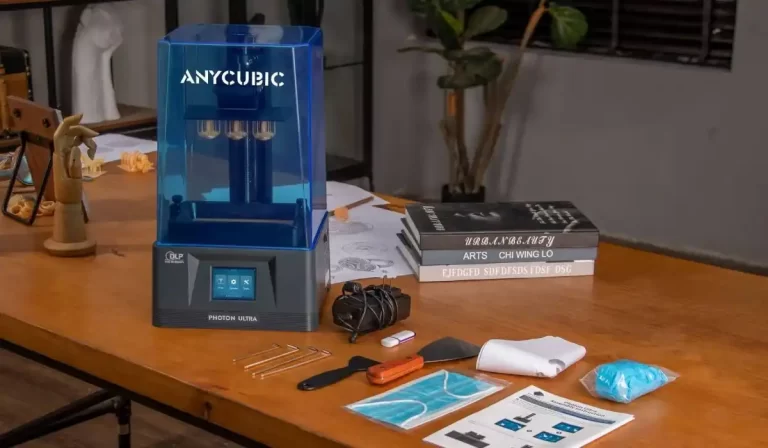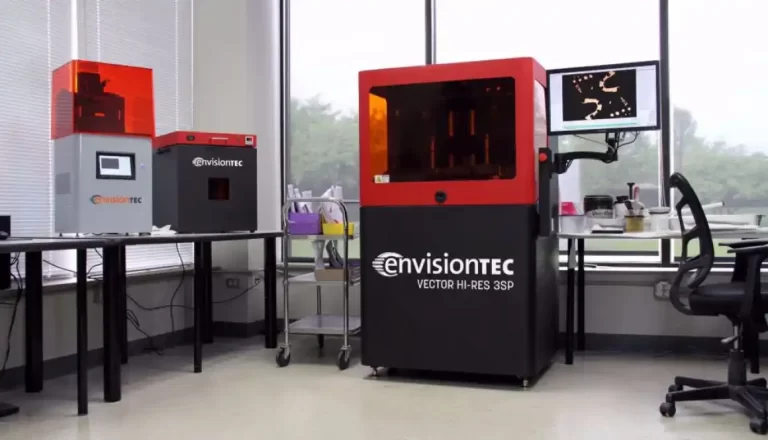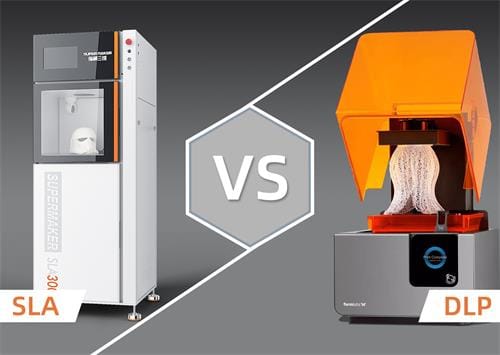Since the invention of stereolithography (SLA) by Charles Hull in 1984, a variety of technologies such as FDM, SLS and MJF have emerged in the additive manufacturing market today.Some are even additive technologies derived from SLA, such as digital light processing (DLP). As you may know, each of these processes is specific to a different industry and application.
SLA VS DLP
Next we will focus on SLA and DLP printing technology characteristics in order to establish a comparison between these two processes. While these two technologies have many things in common, there are also some distinct differences. How do these technologies work? What materials can be used? Who are the main manufacturers? We have provided a systematic introduction and comparison below.
SLA and DLP 3D Printing Technology
While there are some differences between SLA and DLP printing processes, there are also some similarities between the two. They both expose a liquid photopolymer to a light source. Since they both have a resin bath, they are both designed to print small models with precise details. These methods are compatible with flexible or rigid materials and can also print composites, such as filled glass or ceramics. It is important to note that the printed parts are relatively fragile and prone to deterioration and possible warping if exposed to sunlight.
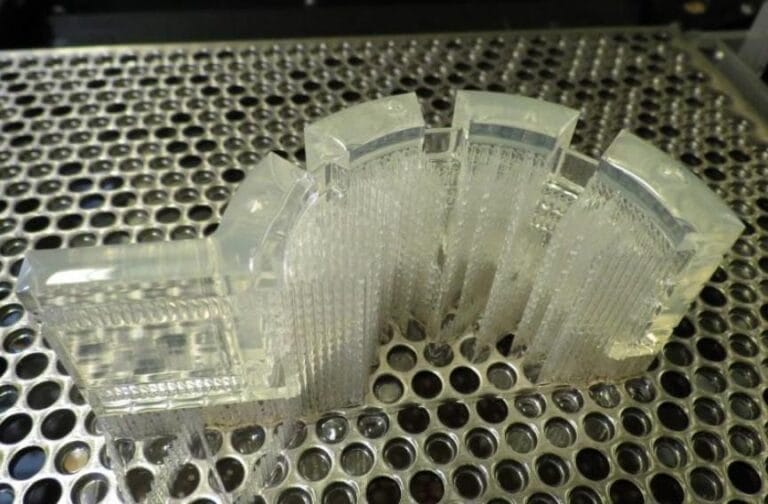
△ Both SLA and DLP use liquid resins.
Stereolithography (SLA) was the first 3D printing technology developed in 1984 and is now considered to be one of the most accurate 3D printing processes on the market. Unlike DLP technology, SLA uses a laser as the light source. The laser beam sweeps across a resin groove that moves in a horizontal axis, causing the material to cure layer by layer. There are now two types of machines: those where the laser acts from top to bottom, with a plate for each layer, which drops with the new layer, and those where the laser acts from bottom to top, with a platform that rises as you move. SLA achieves a smooth surface and a layer thickness of 0.05 to 0.01 mm, thus allowing objects with extremely thin layers to be printed.
The Digital Light Processing method (DLP) comes from image projection technology (dating back to the 1980s) and uses a projector as the light source. In this way, a single projected light affects the entire resin tray at once. At the heart of this process is a digital micromirror device (DMD), located between the projector and the resin. It is individually controlled and activated by several microscopic mirrors: if they are active, they reflect the light onto the resin and perform the light curing. Some 3D printers have now replaced the DMD with an LCD screen, significantly reducing the price of the machine. However, we will not focus on these solutions today.
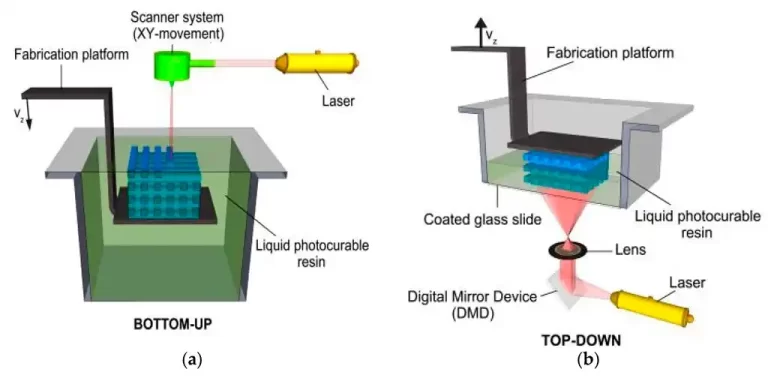
The DLP process is considered faster than stereolithography because it does not work point by point. In addition, DLP printers are larger due to their projectors. In most cases, the resin slots on DLP machines are shallower than those used in the SLA process.
Finally, the last difference between SLA and DLP technology is in terms of maintenance. DLP printers require little maintenance and are usually easier to repair, the presence of a laser in SLA machines has a lot to do with this.
Print Quality
Print quality is often the decisive factor in choosing between two technologies. Especially if 3D printing is to be used to produce finished parts, meaning that the level of detail, structure and surface plays a very important role. In principle, it can be said that both technologies make it possible to design precise, high-resolution models with the finest level of detail. However, it is not only the process itself that plays a decisive role in the quality of the print, but also the choice of materials. The latter often depends on the manufacturer, and most machines are closed in terms of compatibility.
When printing with the SLA process, the resin is polymerized point by point on the print bed. The longer the part, the longer the printing time required, as the laser must pass over the entire bed. Therefore, SLA is better suited for printing objects between a few millimeters and 1.50 meters in length. However, there is no loss of quality due to length and Z-resolutions of up to 25 µm can be achieved: they are both independent of the model size.

DLP technology allows for layer thicknesses of up to 5 microns. However, it is important to note that due to pixel projection, DLP 3D printers can create a “stepped” phenomenon on the final product, which affects the final surface of the printed part. When printing long parts, quality loss can occur on the sides. The center of the plate does receive the most concentrated energy from the projector; its light then gradually spreads out at the edges.
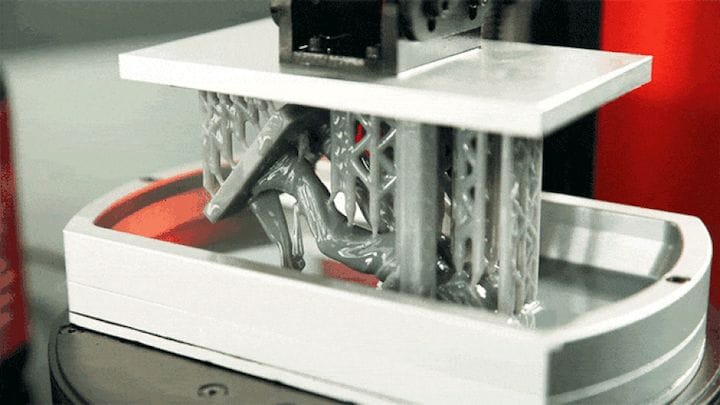
Technical Features
Print speed
When it comes to printing speed, DLP technology clearly leads the way. Since DLP cures the entire resin layer at once, the printing process is much faster. Unlike the SLA process, where the resin is polymerized point by point, in the DLP process, only the height of the part affects the print speed.
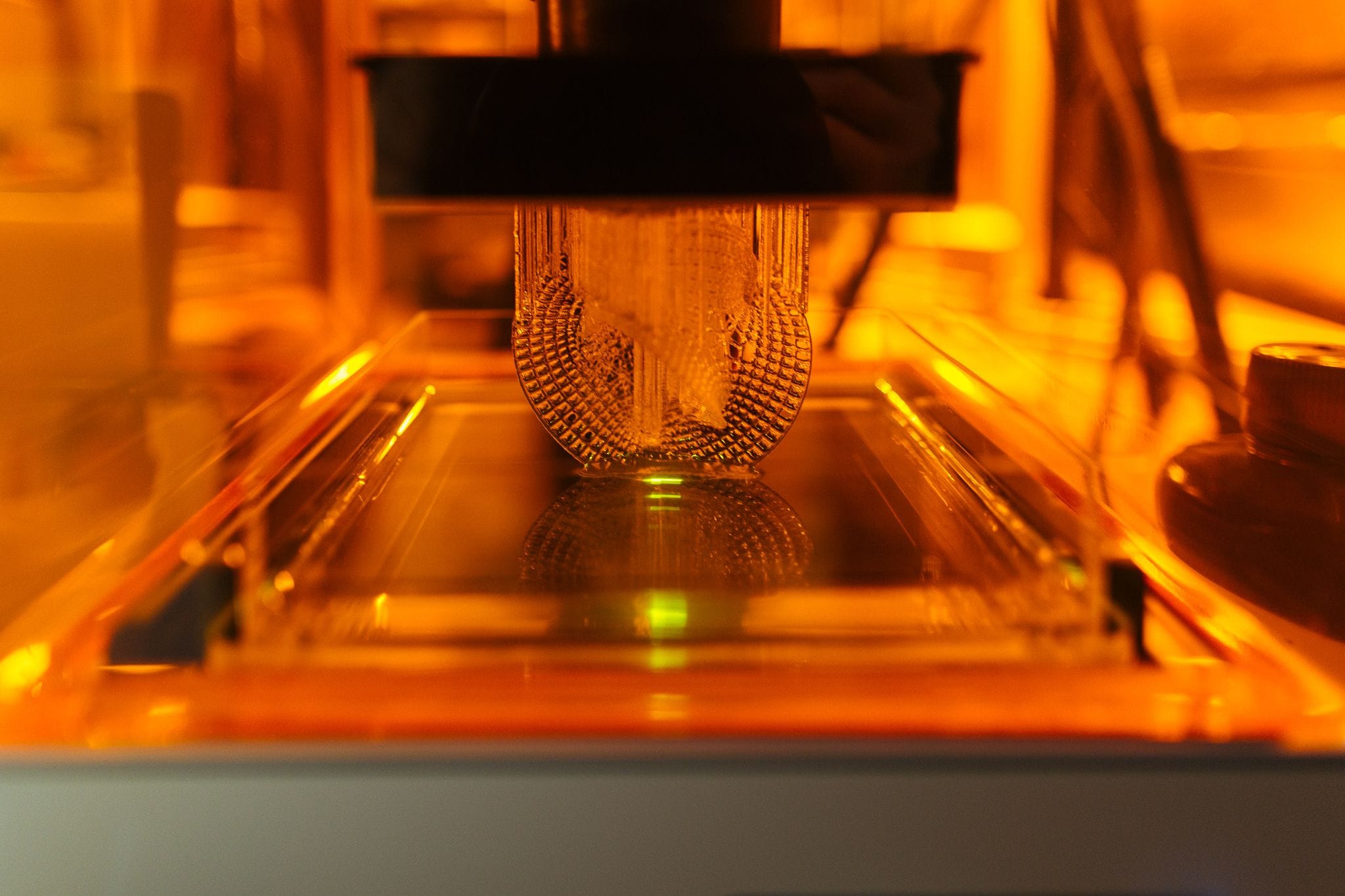
Print volume
Stereolithography is not necessarily used to produce large parts because of the high material cost compared to other processes such as FDM. In addition, the print volume is limited by the size of the container containing the liquid resin.
The Formlabs 3L SLA printer has a build volume of 335 x 200 x 300 mm, and the 3D Systems Pro X 950 has a build volume of 1500 x 750 x 550 mm. For DLP printers, the Envison TEC Xtrem 8K machine has a build volume of 450 x 371 x 399 mm, and the Carima DM400A model has a build volume of 400 x 330 x 500 mm.
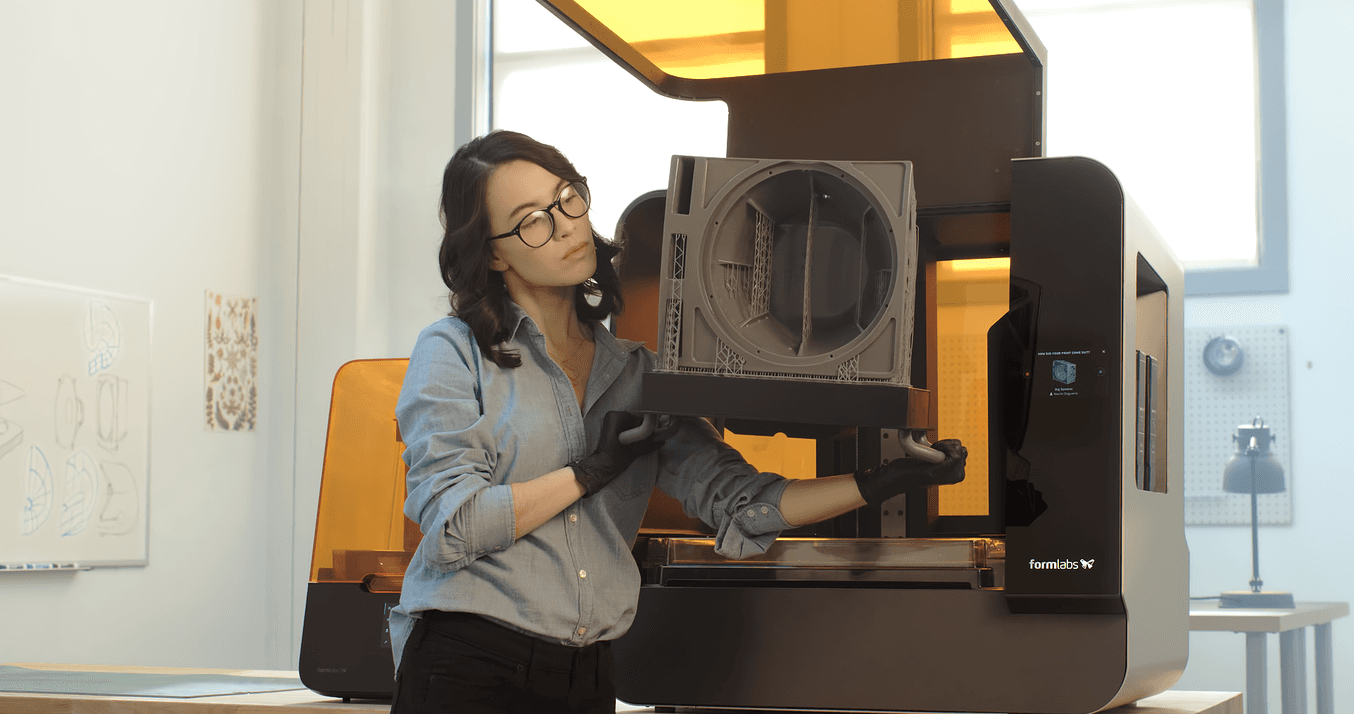
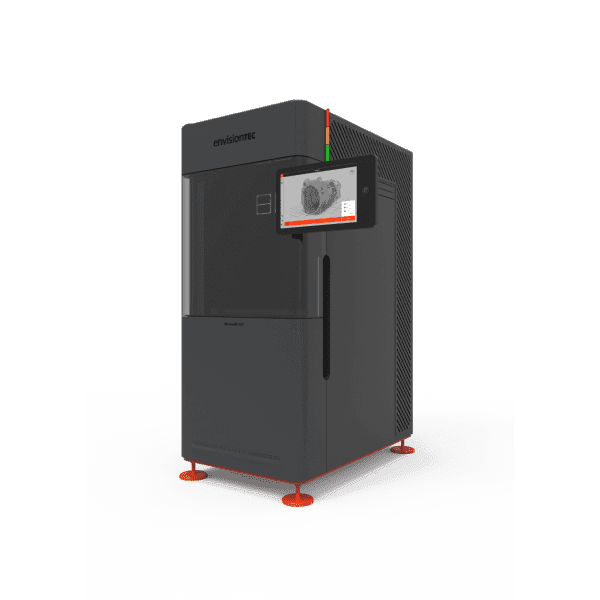
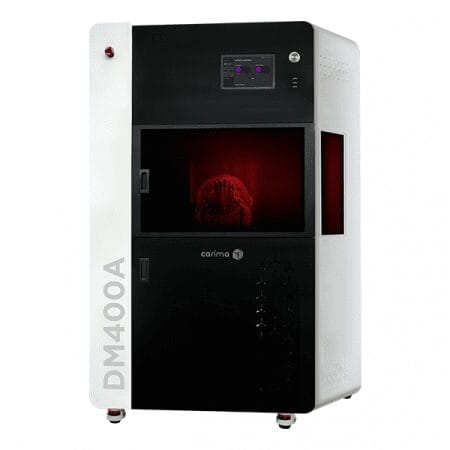
Post-processing
In all resin 3D printing processes, post-processing of the part is mandatory. This is due to the fact that support structures are needed when printing very thin models and must be removed after curing. This step can be time consuming and is probably one of the main drawbacks of resin 3D printing. The differences in post-processing are mainly related to the materials used, in both SLA and DLP processes. In addition to cleaning the liquid resin parts with isopropyl alcohol (IPA) or tripropyleneglycol monomethyl ether (TPM), this includes drying, removal of the support structure, possible post-curing, and sanding and painting of the part if necessary. In principle, it could be argued that post-processing in SLA and DLP processes is not only time-consuming, but also requires a degree of expertise on the part of the user, or should be left to experts. post-processing in 3D printing is often a challenge for users, which is why some companies have specialized in optimizing or automating this step; of course, many companies with previous experience in 3D printing can be trained to do the relevant post-processing work.
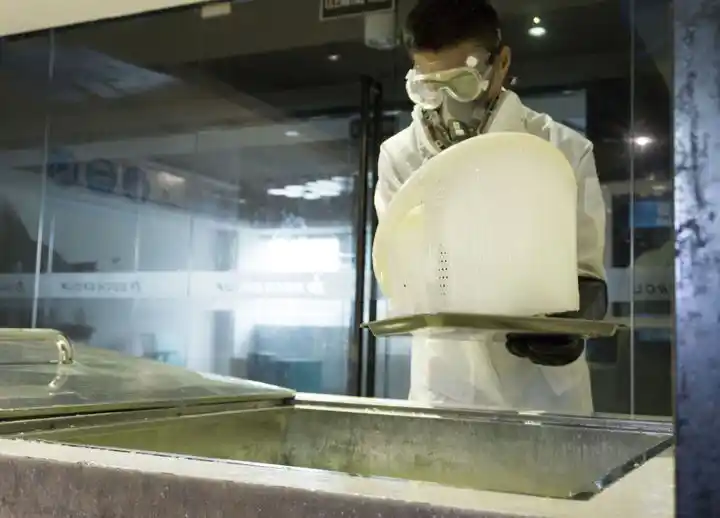
Application Cases
When it comes to use cases, SLA and DLP technologies are mostly used in similar industries. In particular, the jewelry and dental fields often use resin 3D printing. For example, manufacturer Formlabs offers a variety of resins for use by medical professionals. Many companies use them to create various types of medical devices, such as surgical guides. We at ZONGHENG3D often provide our customers with solutions for automotive parts and dental models. However, due to the wide variety of materials available, many manufacturers use resin 3D printing in other departments of their companies as well. Whether it’s for prototyping, injection molds, or even engineering, several suitable resins exist.
Major Manufacturers
There are a number of 3D printer manufacturers that have moved to SLA technology. Obviously, one of the major manufacturers remains 3D Systems, a company founded by Charles Hull. But as time goes on, other manufacturers have emerged. Formlabs, in particular, has established itself as one of the leaders in SLA 3D printers. And in addition to offering SLA machines, this American company also offers many resins and materials, such as Castable Wax40 resin for the dental field. With its line of XFAB printers, manufacturer DWS also offers machines based on stereolithography. We at ZONGHENG3D are also late bloomers, with years of research and industry demand for 3D printing in China, and after years of testing and debugging, we have manufactured SLA300, SLA400, SLA600, and many other light-curing machines with small size, large print size, and no environmental constraints according to the market, making it possible for many manufacturers to put the machines directly in their offices.
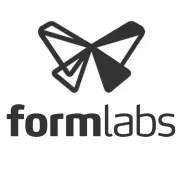
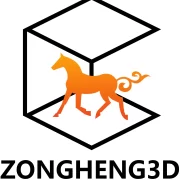
When it comes to DLP 3D printers, EnvisionTEC, founded in 2002, is considered to be a pioneer of the technology. And like B9 Creator and Asiga, some companies then seized the DLP process to develop their printers.
We can also mention manufacturers who rely on the DLP process to deliver faster technology. Carbon 3D with its Digital Light Synthesis (DLS) technology, which controls the flow of oxygen or photocentric companies and Daylight Polymer Printing (DPP). Finally, the French company Prodways has also patented a DLP-like process, known as MOVINGLight technology.
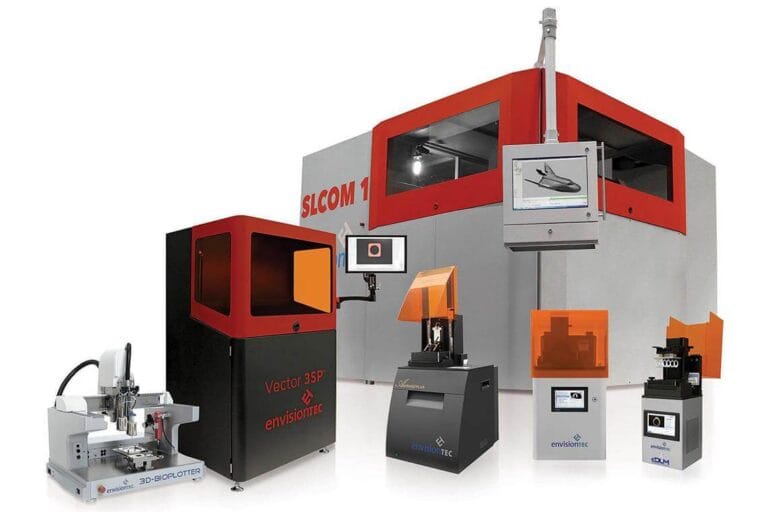
EnvisionTEC is considered a pioneer of the DLP process in 3D printing
Price
In most cases, DLP printers are less expensive than SLA. But as with all series of 3D printers, it is important to distinguish between desktop and industrial printers.
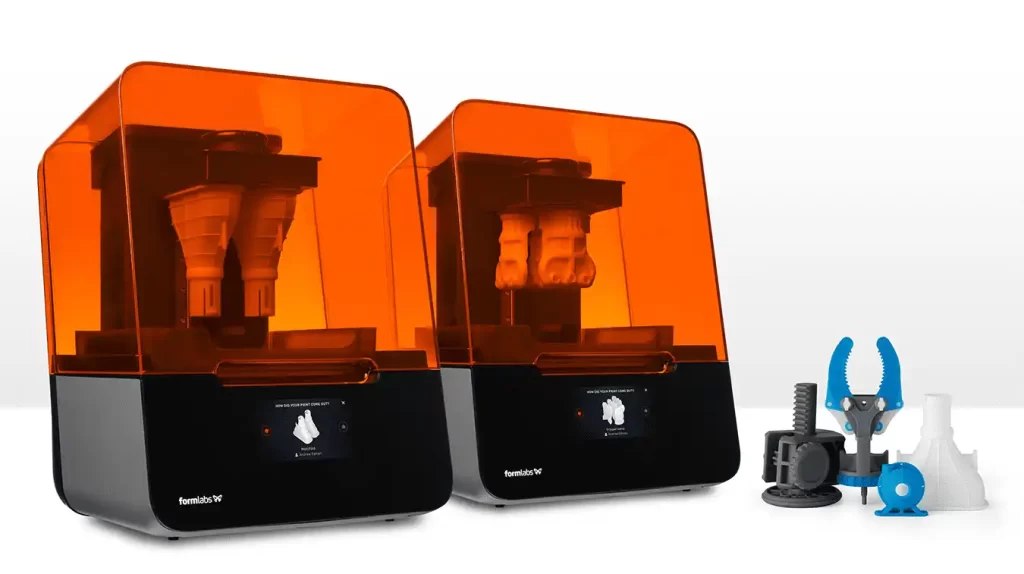
For entry-level SLA 3D printers, the easiest desktop machine to use is Formlabs’ From 2. Its build volume is 145 × 145 × 175 mm,Laser Spot Size is 140 microns.
The machine is priced at $2,400 and has been on the market since 2015. The latter Fromlabs has since developed the Form 3 and Form 3L models, both of which have gained popularity in the market.
In the industrial track, our main SLA300 and SLA400 meet several market needs at the same time, including schools, laboratories, studios, automotive design companies, etc. In addition to the ultra-low cost of our materials and the extremely high cost-to-quality ratio of the printers for batch printing, the stability of the machines is unanimously recognized by our customers.
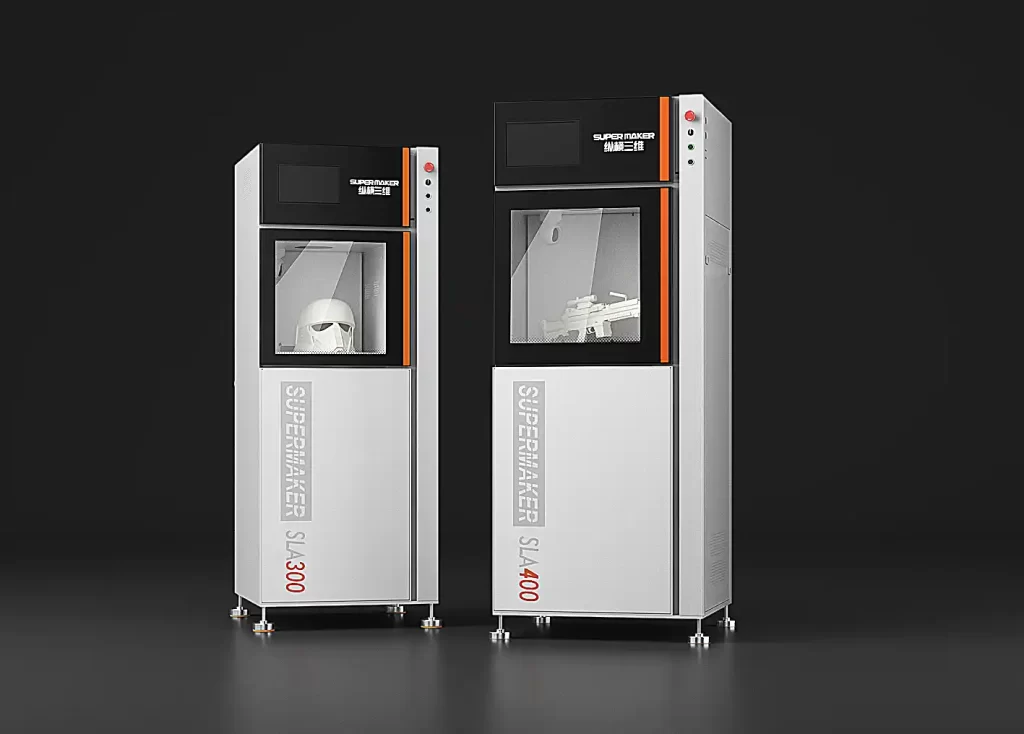
DLP 3D printers are more readily available, attracting many additive manufacturing enthusiasts. Anycubic sells several DLP machines for about $200, just like the Photon Zero printer. Specialty machines, including those offered by EnvisionTEC for the dental and jewelry industries, sell for about $15,000. As always, prices may vary depending on the manufacturer. Manufacturer Asiga also offers professional DLP 3D printers, but at a price of about $1,000.
